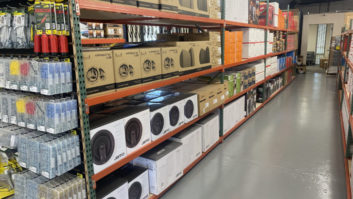FRAMINGHAM, MASS. –
IDC is reporting
it expects year-over-year harddisk-
drive (HDD) shipments to increase
despite the devastating natural disasters
that crippled the category in 2011.
The research firm is forecasting a
7.7 percent increase in worldwide
shipments for 2012, compared with
the 4.5 percent drop that took place
in 2011. IDC stated the compound
annual growth rate for the HDD segment
will be 9.6 percent for the period
2011 to 2016.
2011 shipments were impacted by
the massive flooding in Thailand that
effectively shut down Western Digital
and Seagate’s HDD manufacturing facilities
for the fourth quarter. Production has restarted, but it is anticipated
it will not reach its former level until
later this year.
The dearth of HDD drives pushed
HDD prices up for the first time in several
years. IDC said vendors have taken
advantage of the supply shortage to
reset prices and recover some of the
price erosion that took place over the
last three years.
IDC expects year-over-year revenue
growth to approach $50 billion by 2016,
with a compound annual growth rate of
8.6 percent for the years 2011 to 2016.
Reaching this number will depend upon
PC vendors successfully incorporating
hybrid hard-disk solid-state drives into
the market, IDC said.
Implementing hybrid drives will be a
challenge for vendors, IDC said. While
solid-state drives offer faster data-transfer
rates and use less power, they are considerably
more costly. Hybrid drives deliver
some of the benefits of an SSD at a lower
cost, but HDD makers have to convince
their PC counterparts that incorporating
these drives is a cost-effective solution to
improving PC performance.
Another trend noted by IDC is a shift
in HDD usage. IDC said PCs will fall
behind personal/home storage devices
and enterprise-class servers as the primary
device absorbing HDD production.
This trend is taking place as computing
enters the Cloud phase, where
consumers store the majority of their
content on a centralized device and access
it with their smartphone, tablet or
laptop computer.













